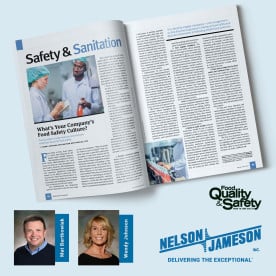Monthly Archives: March 2013
- March 27, 2013
The food industry, in so many ways, is a product of the sun. The sun is a source of energy and growth for plants in the field and animals out to pasture. What if this same source at the heart of the food industry, could also power the operations of the food industry itself? The idea of harnessing the sun through solar power is nothing new; what is new is the more earnest ways in which companies of all kinds are exploring ways to implement and use solar power in everyday operations. Not just the concern of a few environmentally conscious companies, the use of alternative power sources is something that is gaining more attention across the food industry thanks to the demand for “green” products and the possible cost-savings that can come with a successful solar power program.
Conversely, the reality remains that solar energy programs are expensive and can be difficult to implement in the industrial sector. The use of solar energy is far from being widespread in the food industry at this point. With these challenges still very much in place, why is there this focus, by some food industry interests, on looking further into solar energy?
Achieving some level of energy independence is one of the key reasons why industry interests are pursuing solar power. Whole Foods, for instance, utilizes solar power as a supplement to their wind power credit purchase. The company considers cost-saving concerns along with environmental concerns as both important factors in utilizing solar power. As their site states, a successfully implemented solar installation can: “Produce and save more than 2.2 million kilowatt hours over 20 years,” “Result in more than 1,650 tons of CO2 emissions avoided, the equivalent of removing 440 cars from the roadways,” and “Reduce the impact on our country's power grids.”
- March 15, 2013
The Food Safety Modernization Act continues to spur discussion and debate among various interests. Recently, results on several trials concerning product tracing in the food
- March 13, 2013
EPDM is the standard elastomer on many pumps and valves and is not compatible with petroleum-based products. Using lubricants such as the popular Petro-Gel in these applications





